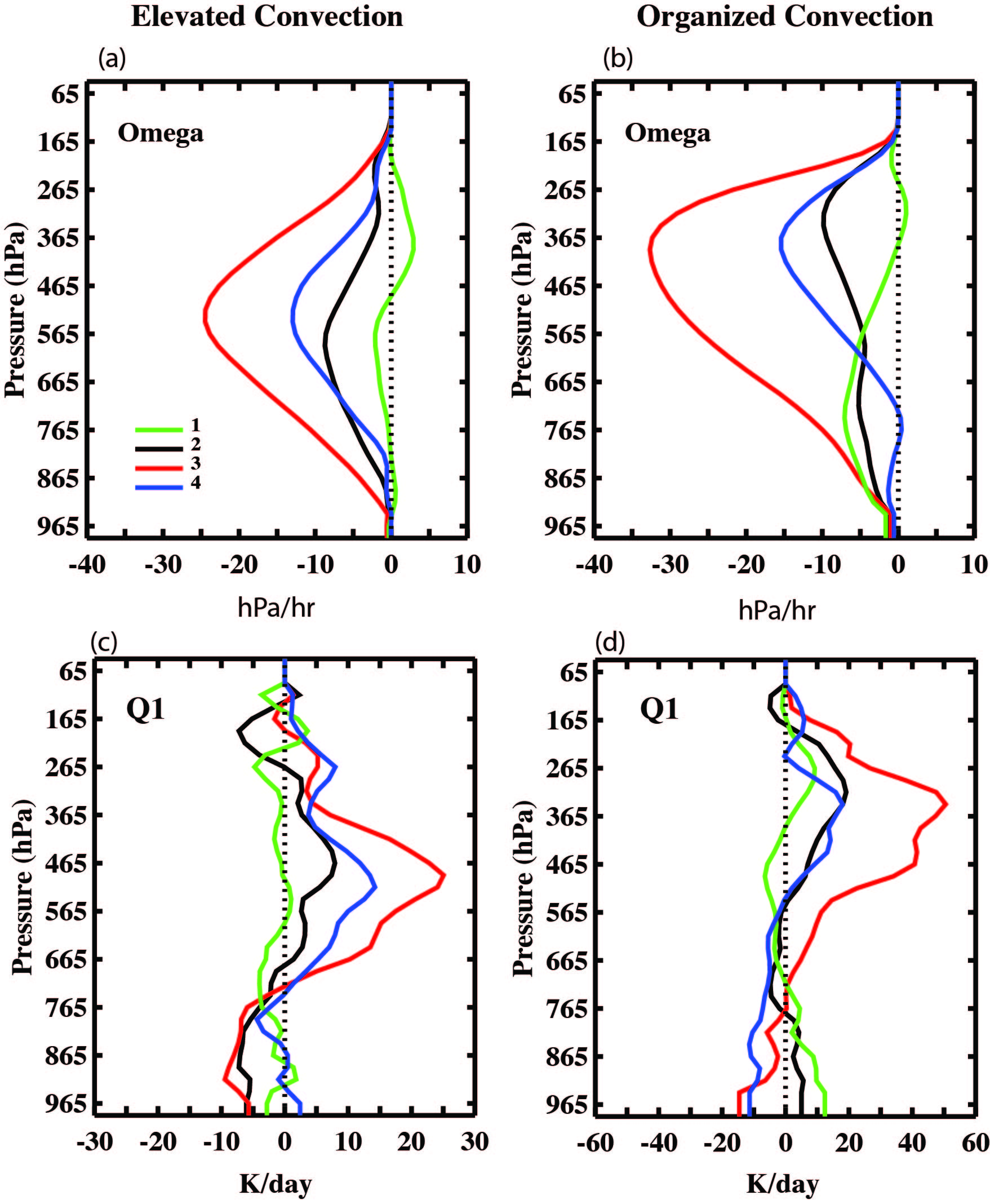Interactions Between Cumulus Convection and Its Environment as Revealed by MC3E
Submitter:
Xie, Shaocheng — Lawrence Livermore National Laboratory
Area of research:
Atmospheric Thermodynamics and Vertical Structures
Journal Reference:
Science
After decades of effort, accurately representing cumulus convection is still one of the most challenging tasks for weather and climate modeling. This is primarily because the interaction between cumulus convection and its environment has not been fully understood. Previous budget diagnostic studies have often targeted tropical convective systems given the dominant role these convective systems play in the global water cycle. Few suitably designed field studies have been carried out in the midlatitudes. Scientists at Lawrence Livermore National Laboratory collaborated with scientists at Brookhaven National Laboratory and Stony Brook University to use the sounding data collected from the ARM Midlatitude Continental Convective Clouds Experiment (MC3E) during April–May 2011, in central Oklahoma, to improve our understanding on the interactions between cumulus convection and its environment in midlatitude convective cloud systems. Such a study can provide necessary observational guidance to future cumulus parameterization development.
Impact
MC3E featured discrete convective storms, most often characterized as elevated nocturnal events in late April and into early May, as well as well-organized convection (squall line) and severe supercell thunderstorm events during the middle- to late-May. These are the two typical convective systems often observed in this region. Researchers compared well-organized squall lines and deeper convective systems with nocturnal weaker and elevated convective episodes over the ARM Southern Great Plains location during the campaign. Using these unique MC3E sounding data constrained with surface and Top-of-the-Atmosphere (TOA) measurements through a variational analysis method, the researchers computed the large-scale budgets of temperature and moisture, then estimated the total diabatic heating (Q1) and drying structures (Q2) in these convective systems. A composite analysis is conducted to better understand how large-scale flow affects atmospheric stability and interacts with convection. Four stages are defined based on the intensity of diabatic heating: initial, early growth, maximum intensity, and decay stages. The focus is to understand similarities and variations in large-scale conditions as well as diabatic heating and drying structures for the two different bulk convective cloud system types with the goal to understand how the large-scale atmospheric structure interacts with these convective systems under different conditions.
Summary
Distinct large-scale structures and diabatic heating and drying profiles are presented for cases of weaker and elevated thunderstorms as well as intense squall line and supercell thunderstorm events during the campaign. The elevated cell events were nocturnal convective systems, occurring in an environment having low Convective Available Potential Energy (CAPE) and a very dry boundary layer. Convection in these systems is thought to be initiated at mid-levels, partially as a result of cloud-radiation interactions, as well as synoptic forcings. Long-wave cooling at the top of high stratiform clouds, and warming below, destabilized the atmospheric column at mid-levels. Deep convection eventually occurred from the boundary layer as the systems evolved with time. In contrast, deeper convective events happened during the morning into early afternoon within an environment associated with large CAPE and a near-saturated boundary layer. Their pre-environments were associated with a large amount of CAPE along with a near-saturated boundary layer. The latter was largely due to the persistent near-surface southeasterlies that brought in sufficient warm and moist air to the experiment region from the Gulf of Mexico. Strong, deep convection occurred rapidly with its roots in the boundary layer. As the systems reached maturity, the diagnosed diabatic heating in the latter deep convective cases was much stronger and of greater vertical extent than the former. Both groups showed considerable diabatic cooling in the lower troposphere, associated with the evaporation of precipitation and low-level clouds. The horizontal advection of moisture also played a dominant role in moistening the lower troposphere, particularly for the deeper convective events as a result of the persistent low-level moisture supply from the Gulf of Mexico. The moisture convergence was often present before these systems develop, suggesting a strong correlation between the large-scale moisture convergence and convection.


